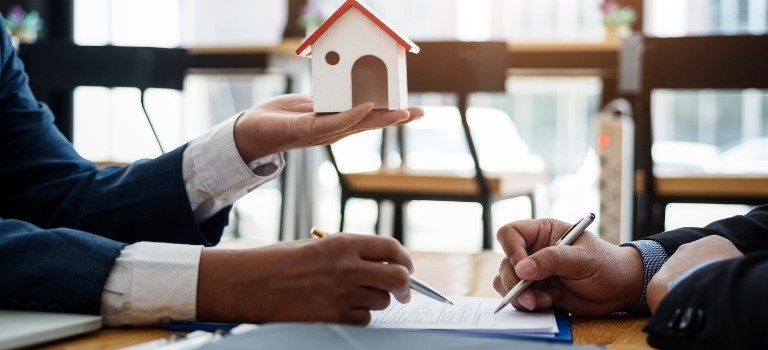- Selling
- Buying
- Landlords
- Renting
- New homes
- House prices
- International services
International offices
China, Hong Kong SAR, India, Indonesia, Malaysia, Middle East, Pakistan, Qatar, Singapore, South Africa, Thailand and Turkey
Learn more - Contact
- News
- Contact
- About us
- My B&R
What happens to property left in a trust
- Landlords news
- 11.09.24
- Benham and Reeves
|
Getting your Trinity Audio player ready...
|
Contents [show]
- Who are the Parties involved in a Trust?
- Is it easy to set up a trust?
- What are the types of trust can a property owner create?
- When should you set up a trust?
- Why should you set up a Trust?
- What happens to Property left in a Trust?
- What things to consider before adding a Property to a Trust?
- Should I set up a Trust and put a Property into it?
Trusts are not only for the super wealthy or Ultra High Net Worth families, but work for people with property assets. Trusts help with managing inheritance tax, allowing people to pass assets on to the next generation or even grandchildren, yet in many cases retaining some control over the assets.

Trusts can hold both moveable and immovable assets – although property, shares and bonds tend to the main holdings.
Who are the Parties involved in a Trust?
There are three primary people involved
1. The Settlor – the person who actually creates the trust and gifts the assets into the trust (usually the estate owner);
2. The Trustee – the person who manages the trust (usually a trust company, bank, or solicitor) and;
3. The Beneficiary – the lucky person who receives the benefits, whether that be income, capital or a mix of the two.
Care home costs, divorce and remarriage are often valid reasons leading many property owners to create trusts.
Is it easy to set up a trust?
Yes it is easy to set up a basic Bare Trust but it can lead to confusion and mistakes which can be very costly. Setting up a trust and structuring it correctly requires formal legal and financial planning, as the Settlor will lose ownership of anything put into a trust – transferring a Property to a trust is not reversible and is in effect giving the Property away so Settlors must take formal advice and fully understand the implications.
What are the types of trust can a property owner create?
Depending on the purpose of the trust, there are typically seven types of trusts in the UK with different tax structures and terms of property inheritance and asset distribution.
1. Bare trust
A simple trust created where the beneficiary gets all the assets and income generated from them upon reaching 18 years of age. This can be done for children or grandchildren under the age of 18 but few know that it can be done for anyone or any age, often to conceal the beneficiary.
2. Interest in possession trust
The Beneficiary has a right to the income generated from the assets (for example, rental income from a rented property) but has no right to sell or distribute any of the assets.
3. Discretionary trust
The Trustee has the right to make decisions about asset management and how proceeds get distributed among the beneficiaries. The level of discretion is based on what is set out in the Trust Deed, which is why it is essential the Settlor takes advice and understands what they are setting up.
4. Accumulation trust
The Trustee is allowed to accumulate income, adding to the trust’s capital value, and also make income payments as with discretionary trusts.
5. Mixed trust
A flexible trust that combines the benefits of different types of trusts and their respective tax liabilities.
6. Disabled or vulnerable trust
Assets added to a trust created for a child or disabled person as its beneficiaries are subject to lesser taxes and more benefits. Such a trust does not affect the other social benefits the beneficiary may be entitled to.
7. Non-resident trust
A trust where none of the trustees reside within the UK with very different taxation laws applicable.
When should you set up a trust?

Depending on your needs and those of the beneficiaries mentioned in your will, you can set up a living trust, executed when you are still alive, or a will trust that comes into effect after your passing.
Why should you set up a Trust?
The most common reasons to create a trust include
- To pass assets to the next generation.
- To ensure minors and vulnerable dependents get their rightful inheritance and all the benefits that come with it.
- To provide for family members who need care without disrupting their eligibility for social security and other government benefits.
- To safeguard assets from creditors and others claiming to be beneficiaries.
- To protect asset value depreciation as coverage for care home fees.
- To provide residency rights for a spouse or civil partner and ensure the eventual transfer of assets to children/beneficiaries.
There are many other reasons why property owners set up a trust. Consultation with professionals – both legal and financial advisors are essential to help you make the best decision for your situation.
What happens to Property left in a Trust?
This depends entirely on the terms laid out without the trust deed, with the Trustee retaining control over the management and distribution of assets added to the trust. While the structure of the deed will determine how much authority the Trustee has, here are a few general outcomes for properties left in a trust.
1. Granting life interest
If you are married and have a spouse or surviving partner then you can give them a ‘life interest’ which allows that person to legally live in the home for the rest of their life without providing outright ownership.
2. Maintenance cost
The Trustee is responsible for recurring expenses such as maintenance fees, council taxes and essential repairs. The funds for these expenses could either be paid from income generated from other assets within the trust or by the current occupant of the Property.
3. Ownership and sale
If the life tenant and other beneficiaries mutually decide to sell the Property, the proceeds from the sale are split between the beneficiaries according to the ownership percentage mentioned in the Trust Deed.
4. Demise of a life tenant
If the person to whom a life interest was granted passes away or chooses to remarry, the Property will either be sold and the proceeds paid out to the beneficiaries or the Property will be directly transferred to the beneficiaries – the process follows what the Trust Deed says.
What things to consider before adding a Property to a Trust?
While transferring a Property to a Trust provides benefits, you must consider a few things
1. Choosing the right Trustee
The reason it is called a trust is that you should be able to trust the person in charge of managing the Property in your absence.
2. Creating the Trust Deed
This will act as the main legal document outlining all the terms of inheritance and liabilities.
3. Informing HMRC
Trusts must be registered with HMRC . There are big fines for people who don’t register a Trust.
4. Transfer of Property
Transferring a Property to a trust must be registered with Land Registry, which can lead to costs, such as stamp duty, Land Registry registration and solicitor fees need to be paid.
5. Maintaining records
Trustees need to ensure that all trust-related activities, such as income generated from assets and other transactions are recorded and produced when required.
Should I set up a Trust and put a Property into it?
Putting a Property into a Trust needs very careful consideration – it’s a big financial step as you are effectively giving it away and cannot take it back! There are a lot of benefits of Trusts for property owners but you must take into account the costs involved and make a reasoned decision after consulting with a lawyer and financial advisor.
As a full one stop service property company, established in 1958, Benham and Reeves sole job is to help clients with buying, selling and letting properties anywhere in London.
Contact us for more information.
Sign up to our newsletter
Subscribe
How much is your property worth?
Media enquiries
About the Author
Established in 1958, Benham and Reeves is one of London’s oldest, independently owned property lettings and sales agents. With specialism in residential sales, corporate lettings and property management in prime areas of London, the company operates from 21 prominently located branches and 14 international offices.View all posts by Benham and Reeves














